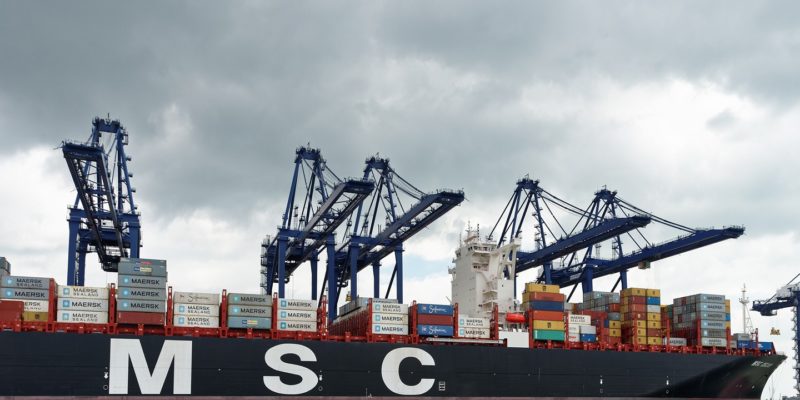No Withdrawal Agreement? What happens next?
During October 2018, the UK and the EU are hoping to have agreed on the basis for the UK to withdraw from the Union, with the Agreement to be ratified by EU institutions and the UK Parliament before the UK leaves on 29 March 2019. What happens if the UK leaves with no deal in place?
Where are we now?
In August 2017, Oxera published an analysis on the implications of Brexit for UK ports. At the time, we focused on four illustrative scenarios reflecting the uncertainty surrounding what the final outcome for UK–EU relations might look like. One year on, both sides face the real possibility of a ‘no deal’ scenario, which would include the introduction of tariffs between the UK and the EU, associated trade barriers, increased regulations, and probably increased enforcement. But how would ‘no deal’ affect businesses and consumers?
What is a ‘no deal’ scenario?
On 29 March 2017, the UK triggered Article 50 of the Treaty on the Functioning of the European Union, starting the clock on a two-year period to negotiate a Withdrawal Agreement and a framework for the future UK–EU relationship. This Agreement would come into effect upon the UK’s exit from the EU at 23:00 UK time on 29 March 2019. If no Withdrawal Agreement can be agreed, the UK becomes a ‘third country’—this is the ‘no deal’ scenario.
Following the release of several technical notices over recent weeks, the UK government and the European Commission have been fleshing out what the no deal scenario looks like, in order for citizens and businesses to begin their preparations—suggesting that the no deal scenario is becoming a realistic possibility.
Trade between the UK and the EU
No deal would mean that the UK and EU would not have a Free Trade Agreement (FTA) in place. Trade between the UK and the remaining member states would be on the same (or less than) preferential terms as apply to World Trade Organisation (WTO) members. This would mean that the tariffs stated in the WTO schedule would apply to all trade between the EU and UK, and that any reduction in tariffs offered to the EU would also need to be offered to all countries that the UK trades with on WTO terms. It also means that the EU member states could require border checks, despite any commitment from the UK side to reduce the burden or increase the efficiency of these checks.
This scenario would lead to considerably worse outcomes than those envisaged in our August 2017 article, which quantified the impact of a moderate increase in the number of border checks and assumed symmetric behaviour across the EU and UK sides. However, with EU states adding on checks to all goods leaving and entering the UK, even if the UK did not exercise its rights to do so, we would see the same outcome. With ferries unable to dock and trains unable to unload at other European ports, traffic-holding processes would need to be instigated around the UK’s busiest ports. While some mitigation could be achieved by operational changes to customs checks and traffic re-routing, the sheer volume of traffic and lack of available capacity at other ports would make long queues of HGVs inevitable.
Our August 2017 article suggested that in a scenario where enforcement doubled (in terms of the total number of lorries subjected to customs checks) and no changes to customs checks could be put in place, there would be an annual impact on hauliers of £1bn. Our analysis of a no-deal Brexit suggests that even under conservative assumptions about the increase in vehicles to be checked by member states—and no checks from the UK side—the costs to hauliers would instead amount to well over £2.5bn a year from the disruption alone. None of this analysis includes the further costs associated with delays on surface transport routes to and from ports and railheads, nor further disruption to supply chains.
Impacts along the supply chain
A no deal scenario leads to two direct costs to UK–EU trade.
Trade barriers are established as a result of trading under WTO rules—including the introduction of the WTO schedule of tariffs. For example, the average tariff on dairy products is greater than 35%, and some sources estimate the additional tariff on food per se to be more than 20%.
Additional customs checks incur significant costs, including the time costs of delays, and any cost of switching to alternative routes. The cost to businesses of additional customs declarations has recently been quantified to be in the order of £20bn.
The advice in the recent notices from the UK government suggests that, in a no deal scenario, all firms that import or export goods from the EU will need to fill out customs declarations. Furthermore, businesses are advised to consider whether they should ‘engage the services of a customs broker, freight forwarder or logistics provider to help, or alternatively secure the appropriate software and authorisations’.
Although much depends on the nature of the goods being transported—be they components for just-in-time supply chains, perishables, or construction materials—the factors described above will all increase costs to the supply chain, which will ultimately lead to increased costs for consumers.
What happens to consumer prices?
Businesses may well respond by reorganising their supply chains earlier than March 2019. Alternatively, the increased number of customs checks and the cost of delays may change over time as enforcement levels change or systems and processes are introduced. However, assuming that the sources of additional costs in supply chains come into play immediately on 30 March 2019, we would expect an increase in consumer prices.
Food is a good way to illustrate this, as it affects virtually everyone. The UK imports 50% of its food, with 30% of its food coming from the EU and a further 11% of food coming from non-EU countries but where the trade deals are currently negotiated by the EU. For comparison, less than one-fifth of overall UK consumer spending is on imported goods. In addition, as foodstuffs are perishable, they are likely to suffer disproportionately from any costs arising from delays. Therefore, the most significant impacts to consumers are likely to come from a rise in food prices.
For example, we may expect to see an increase in the price of Irish beef, which would include an introduction of the tariff (of 40%) and an additional cost to reflect the potential increased delay at the port. However, the increased costs may not be passed on in full in consumer prices for a number of reasons, including the following.
- The increased costs may not be passed on where the input costs affected by the increased costs form a small proportion of the final cost to consumers—if, for example, we also include the transportation cost, any processing costs, and retailer margins.
- If Irish beef becomes more expensive, suppliers may switch to sourcing beef from either domestic producers or non-EU producers. While this may be more expensive than the status quo, these alternative sources could become preferable given the additional costs of importing from EU suppliers.
- Retailers or others in the supply chain may absorb some of the cost shock into their margins. The likelihood of this is determined by the extent to which the inputs compete with goods that could be sourced from domestic producers or non-EU producers.
In addition, consumers may respond by switching to lower-price supermarkets or switching consumption so they no longer consume Irish beef.
Therefore, the (greater than) 40% increase in the price of Irish beef is unlikely to result in an increase in consumer spending on beef of the same magnitude. Nevertheless, there is likely to be a significant increase in consumer expenditure on food overall. Supermarkets have estimated that there would be a 12% increase in food prices following a no deal scenario. Even this is likely to be an underestimate, given that sterling could further devalue against the euro in the event of no deal.
This impact alone would result in a permanent shock to consumer prices and lead to a 1 percentage point increase in Consumer Price Index (CPI) inflation for 12 months. An inflationary shock would typically be passed on into the real economy through wage demands, automatic adjustment mechanisms (such as rail fares, utility bills and pensions), and so on. This would leave the Bank of England with a dilemma: raise interest rates to stave off inflationary pressures, or keep them low to stimulate a potentially moribund economy.
It is worth noting that the ‘average’ consumer spends 8.2% of household expenditure on food and non-alcoholic beverages. Where households spend more of their income on food—for example, low-income households spend around one-fifth of their income on food and non-alcoholic beverages—these households will see a larger impact on their personal inflation. It is also these households that are least likely to be able to switch to cheaper supermarkets or alternative foods, as these gains may have already been made.
In addition to food, we would expect to see an increase in the price of other imports, including raw materials, components and consumables. These would be transmitted in the same way into a permanent increase in consumer prices, furthering the significant effect on the real economy. Again, these impacts will be exacerbated by further devaluation of sterling against the euro.
These effects (a reduction in the supply of goods) will be felt by the remaining EU member states, but only where the UK is currently providing a high proportion of a member state’s imports of a particular good. Even where this is the case, any one member state can look to others to provide for its needs in that area, under the terms of the existing pan-EU FTA. The UK, on the other hand, does not have such a wide range of opportunities for filling gaps in its supply chain under a no-deal scenario, making it relatively more exposed to these inflationary pressures.
The UK may seek to address some of these impacts by reducing tariffs from their current levels—particularly for food imports that cannot be produced domestically (so as not to inadvertently affect domestic producers). Alternatively, the UK could adopt looser product regulations, reducing the cost of some food imports. However, the extent to which the UK could adopt some of these changes is not clear. The likely overall impact of a no deal scenario is a significant increase in consumer prices, despite the opportunities the UK government has to mitigate this risk.
In order to allow time for the Withdrawal Agreement to be ratified by both the UK Parliament and the European Parliament—and therefore avoid the magnitude of impacts described above—the deal on the terms on which the UK leaves the EU needs to be agreed by the October summit, or as a final fall-back option, at the EU summit in mid-December, at the latest.
Related

Economics of the Data Act: part 1
As electronic sensors, processing power and storage have become cheaper, a growing number of connected IoT (internet of things) devices are collecting and processing data in our homes and businesses. The purpose of the EU’s Data Act is to define the rights to access and use data generated by… Read More

Adding value with a portfolio approach to funding reduction
Budgets for capital projects are coming under pressure as funding is not being maintained in real price terms. The response from portfolio managers has been to cancel or postpone future projects or slow the pace of ongoing projects. If this is undertaken on an individual project level, it could lead… Read More

